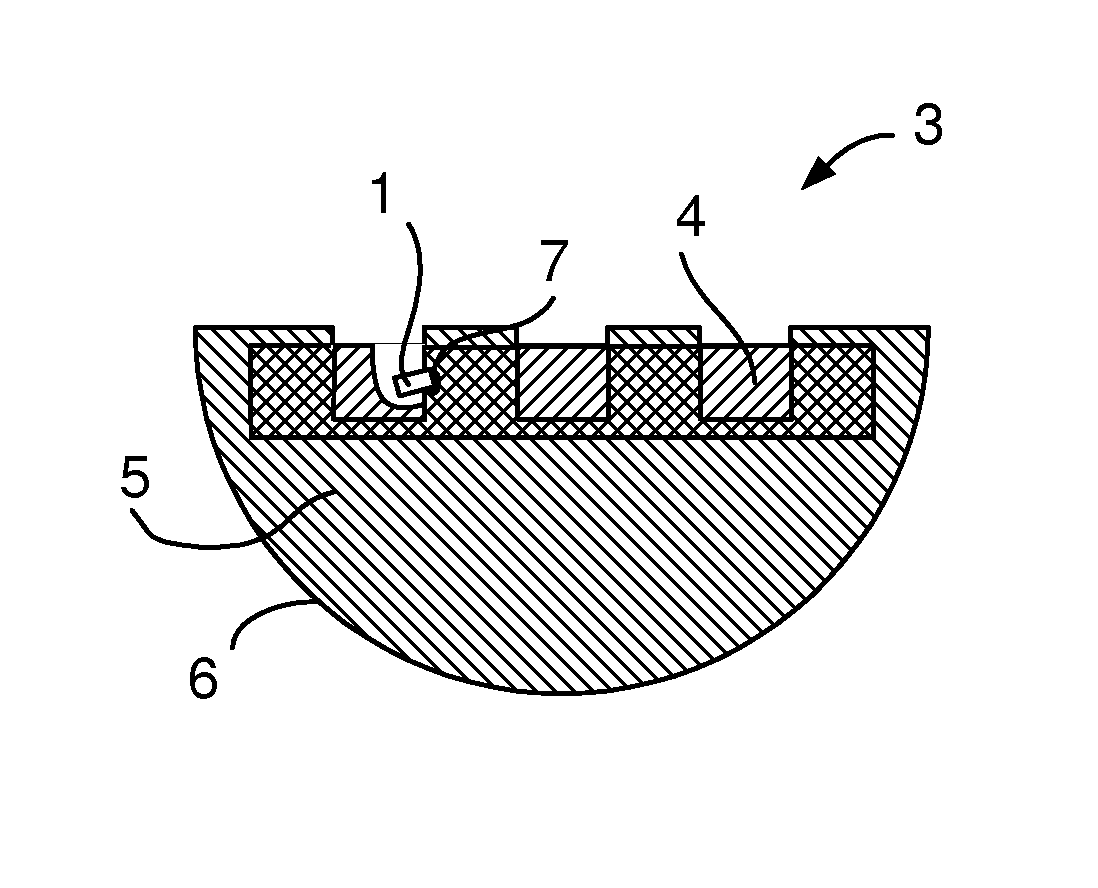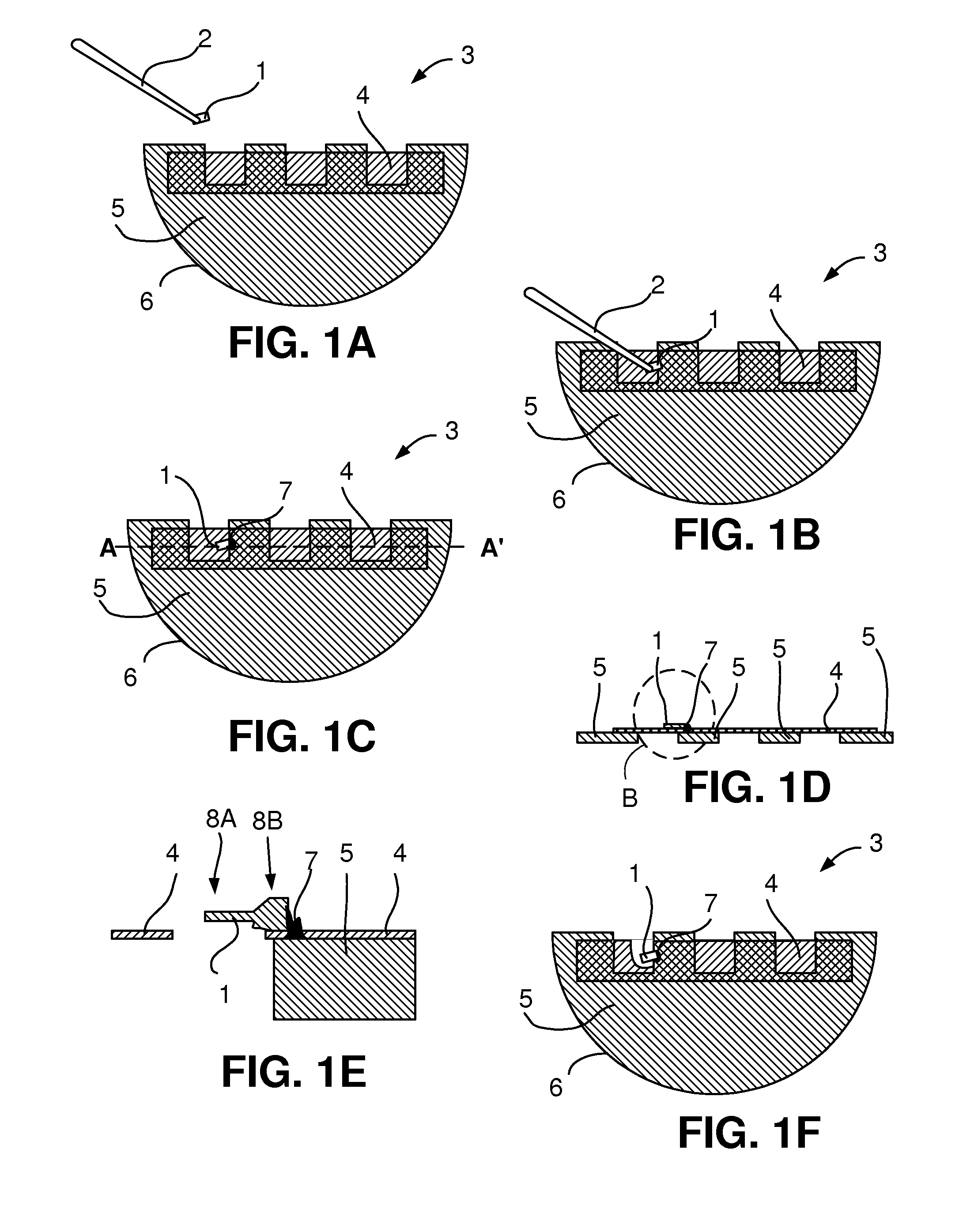Method for thinning a sample and sample carrier for performing said method
a sample and carrier technology, applied in the field of thinning a sample, can solve the problems of time-consuming and laborious welding of the probe to the sample, and the inability to thin the sample, so as to improve the parallelism, improve the accuracy of thinning, and improve the alignment of the sample
- Summary
- Abstract
- Description
- Claims
- Application Information
AI Technical Summary
Benefits of technology
Problems solved by technology
Method used
Image
Examples
Embodiment Construction
[0025]To that end the method according to the invention is characterized in that[0026]the sample carrier is provided with a supporting film adhered to said rigid structure, said supporting film at least partially extending beyond the boundary to which the sample can be attached, and[0027]before attaching the sample to the rigid structure the sample is placed on the supporting film.
[0028]The sample carrier used in the method according to the invention comprises a rigid structure to which the sample is attached, and a supporting film on which the sample is placed before attaching the sample to the rigid structure of the sample carrier. By placing the sample on the supporting film, the sample can then be attached to the rigid structure with e.g. Electron Beam Induced Deposition (EBID), Ion Beam Induced Deposition (IBID), Laser Beam Induced Deposition (LBID), or e.g. by placing a small droplet of glue or resin between the sample and the rigid structure.
[0029]It is remarked that the samp...
PUM
| Property | Measurement | Unit |
|---|---|---|
| TEM | aaaaa | aaaaa |
| area | aaaaa | aaaaa |
| Microscopy | aaaaa | aaaaa |
Abstract
Description
Claims
Application Information
 Login to View More
Login to View More - R&D
- Intellectual Property
- Life Sciences
- Materials
- Tech Scout
- Unparalleled Data Quality
- Higher Quality Content
- 60% Fewer Hallucinations
Browse by: Latest US Patents, China's latest patents, Technical Efficacy Thesaurus, Application Domain, Technology Topic, Popular Technical Reports.
© 2025 PatSnap. All rights reserved.Legal|Privacy policy|Modern Slavery Act Transparency Statement|Sitemap|About US| Contact US: help@patsnap.com



